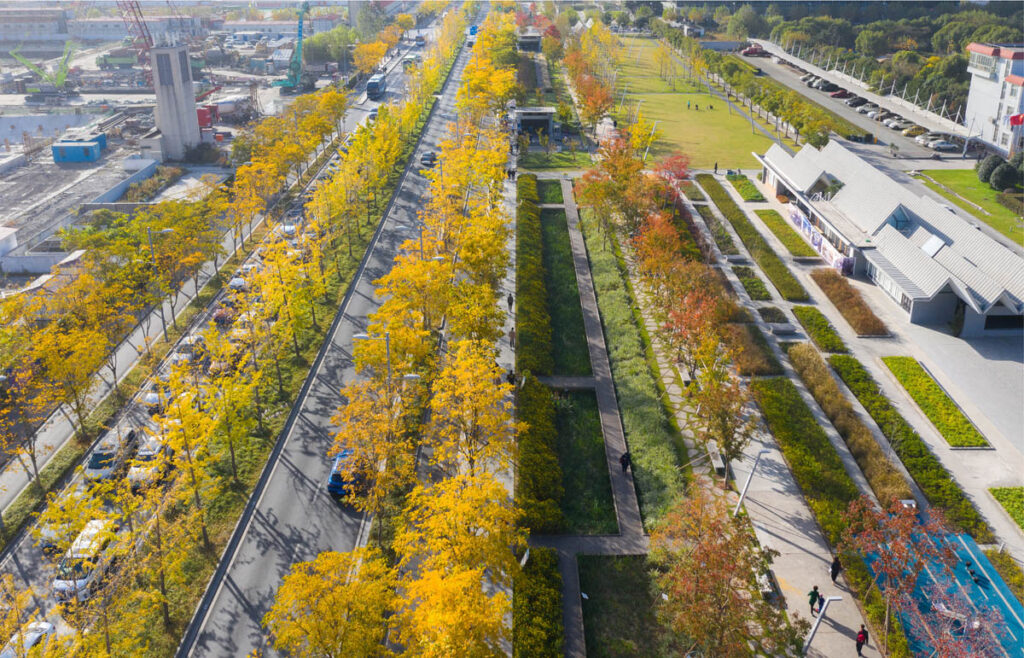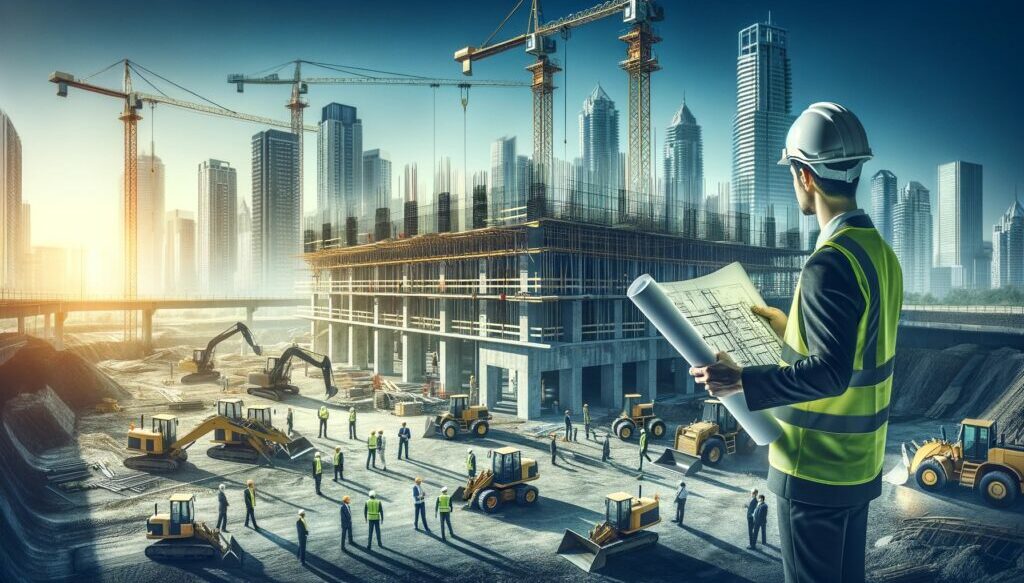Tamamlanan Tüm Projeleri Görmek İçin Tıklayınız
Kentsel Tasarımı ve Peyzaj Mimarisi, mevcut peyzajları korumak, restore etmek ve iyileştirmek ile kentsel alanlarda yeni peyzajlar yaratmak amacıyla bilimsel ve sanatsal ilkeler kullanarak insanların yaşam kalitesini artırmayı hedefleyen bir meslek disiplinidir.
2040 yılı itibarıyla, tüm peyzaj mimarlığı projeleri aynı anda:
- Sıfır gömülü ve operasyonel emisyonlara ulaşmak ve karbon tutulmasını artırmak.
- Ölçülebilir ekosistem hizmetleri, sağlık faydaları, karbon tutma ve yeşil istihdam şeklinde önemli ekonomik faydalar sağlamak.
- İklim adaletsizliklerini ele almak, toplulukları güçlendirmek ve iklim yatırımlarının adil bir şekilde dağılımını artırmak.
- Ekosistemleri restore etmek ve biyoçeşitliliği artırmak ve korumak.
Peyzaj mimarları, karmaşık, çok disiplinli zorlukları anlama ve yönetme konusunda benzersiz bir şekilde yetkin olup, sürdürülebilir ve dünyayı değiştiren çözümler tasarlamak için eğitim almışlardır. Bilime bağlı kalmaya kararlıyız ve bu İklim Eylem Planı aracılığıyla, iklim ve biyolojik çeşitlilik dostu çözümleri hızla ölçeklendirerek daha olumlu etkiler yaratacağız.
- İklim Dostu Peyzajlar Tasarlamak
- Yaya, bisikletli ve toplu taşıma odaklı topluluklar tasarlamak.
- Enerji kullanımını azaltmak ve yenilenebilir enerjileri desteklemek.
- Toplulukların iklim etkilerine uyum sağlamalarına yardımcı olmak.
- Topluluklarla birlikte finansal sürdürülebilirlik yollarını keşfetmek.
- Biyoçeşitliliği korumak ve artırmak.
- Yerli topluluklardan işbirliği yoluyla öğrenmek.
- İklim koalisyonları kurmak.
Peyzaj Mimarlığı Nedir?
Peyzaj mimarisi, sanat, çevre, mimari, mühendislik ve sosyoloji unsurlarını kapsayan, çeşitli ölçeklerdeki çevrelerin (dış mekanlar ve iç mekanlar) tasarımını inceleyen ve uygulayan bir disiplindir.

Peyzaj mimarisi, birçok kişi tarafından bahçecilik olarak bilinmeyen veya yanlış anlaşılan bir meslektir. Toplum için önemi, birçok kişinin hayal edebileceğinden çok daha büyüktür ve her kasaba, şehir ve ülke halkı tarafından kutlanması gerekir.

Peyzaj mimarları, “binalar arasındaki yaşamı yaratmak ve mümkün kılmak” için mekanların kavramsal tasarımında yer alırlar. Peyzaj mimarlarının katkıları, sokaklar, yollar, ortak yürüyüş yolları, konut siteleri, apartman kompleksleri, alışveriş merkezleri, meydanlar, plazalar, bahçeler, cep parkları, oyun alanları, mezarlıklar, anıtlar, müzeler, okullar, üniversiteler, ulaşım ağları, bölgesel parklar, milli parklar, ormanlar, su yolları ve kasabalar, şehirler ve ülkeler genelinde görülebilir. Peyzaj mimarları genellikle sadece alan tasarımının ötesine geçer, aynı zamanda şehir şekillendirme ve yer planlaması için master planlar, çerçeveler ve politikalar da oluştururlar. Bu çalışmalar, vatandaşların ve hükümetlerin herkes için daha iyi yaşam alanları yaratmalarını sağlamak amacıyla yapılır.

Geçmişten günümüze (ve gelecekte de) birçok peyzaj mimarı, yıllar boyunca zamana direnç gösterecek, birçok insana huzur, neşe ve ilham verecek kalıcı peyzajlar tasarlamıştır. Bir meslek olarak, peyzaj mimarlarının gurur duyması gerekir çünkü çok az meslek, bu kadar çok insanı etkileyen ve fayda sağlayan yerler yaratma iddiasına sahip olabilir.

Peyzaj mimarisi nedir sorusu, ne olduğu ve ne olmadığı konusunda farklı görüşler ortaya çıkarır; çünkü bu meslek o kadar geniş ve kapsayıcıdır ki, çeşitli bakış açılarını barındıracak kadar kapsamlıdır ve hatırlanması gereken bir diğer önemli nokta ise, geniş bir uzmanlık, beceri ve yetenek yelpazemizin olmasıdır.
Kentsel Tasarım Nedir?
Kentsel tasarım, banliyölerimizin, kasabalarımızın ve şehirlerimizin düzeni, görünümü ve işlevi ile ilgilidir. Hem bir süreç hem de insanların yaşadığı, birbirleriyle etkileşimde bulunduğu ve çevrelerindeki fiziksel mekanla etkileşime girdiği yerlerin yaratılmasının bir sonucudur.

Kentsel tasarım, planlama, gelişim, mimarlık, peyzaj mimarisi, mühendislik, ekonomi, hukuk ve finans gibi birçok farklı disiplini içerir.
Kentsel tasarım, kentsel yapının makro ölçeğinden (planlama, imar, ulaşım ve altyapı ağları) sokak mobilyaları ve aydınlatma gibi mikro ölçeğe kadar birçok ölçekte faaliyet gösterir. Tam anlamıyla politika ve planlama sistemlerine entegre edildiğinde, Kentsel tasarım, arazi kullanım planlaması, altyapı, yapılı form ve hatta bir yerin sosyo-demografik yapısı hakkında bilgi sağlamada kullanılabilir.

Kentsel tasarım, bir yerin ekonomik, çevresel, sosyal ve kültürel sonuçlarını önemli ölçüde etkileyebilir:
- Kentsel tasarım, bir yerin ekonomik başarısını ve sosyo-ekonomik yapısını etkileyebilir—yerel işletmeleri ve girişimciliği teşvik edip etmediği; insanları orada yaşamaya çekip çekmediği; konut ve ulaşım maliyetlerinin erişilebilir olup olmadığı; iş fırsatlarına, olanaklara ve hizmetlere erişimin adil olup olmadığı gibi faktörleri belirler.
- Kentsel Tasarım, bir yerin fiziksel ölçeğini, alanını ve atmosferini belirler ve bireysel binaların ve altyapının yerleştirildiği yapılı ve doğal formları oluşturur. Bu nedenle, doğal ekosistemler ile yapılı çevreler arasındaki dengeyi ve bunların sürdürülebilirlik sonuçlarını etkiler.
- Kentsel Tasarım , bir yerin sağlık ve sosyal ve kültürel etkilerini etkileyebilir: insanların birbirleriyle nasıl etkileşimde bulundukları, nasıl hareket ettikleri ve bir yeri nasıl kullandıkları üzerinde büyük bir rol oynar.
Kentsel Tasarım genellikle belirli bir ‘proje’ olarak sunulsa da, aslında zamanla evrimleşen uzun vadeli bir süreçtir. Bina ve altyapı türlerinin, doğal ekosistemlerin, toplulukların ve kültürlerin bu katmanlaşması, yerlere kendilerine özgü karakteristik özelliklerini ve kimliklerini kazandırır.

Peyzaj mimarlığı ve Kentsel Tasarım çalışmalarının küresel düzeydeki yıllık potansiyel ekonomik değeri, bu alanların kapsadığı çeşitli hizmetler ve etkiler nedeniyle tam olarak ölçülmesi zor bir konudur. Ancak, ilgili endüstrilerin ekonomik katkıları dikkate alınarak bazı tahminler yapılabilir.
- Kentsel Gelişim ve Altyapı: Kentsel Tasarım, şehirlerin altyapısının şekillendirilmesinde kritik bir rol oynar ve bunun ekonomik etkisi büyüktür. Kentsel gelişimi içeren küresel inşaat piyasası, 2021’de yaklaşık 10,5 trilyon dolar olarak değerlenmiş olup, önemli bir büyüme göstermesi beklenmektedir. Peyzaj mimarisi de bunun bir parçası olarak, kentsel alanlardaki emlak değerlerine, turizme ve genel yaşam kalitesine katkıda bulunur.
- Emlak Değeri Artışı: Kaliteli peyzaj mimarisi, emlak değerlerini %5-20 oranında artırabilir. Büyük kentsel alanlarda, bu durum milyarlarca dolarlık ek bir değere dönüşebilir.
- Çevresel Hizmetler: Peyzaj mimarisi, hava ve su arıtımı, sel kontrolü ve iklim düzenlemesi gibi ekosistem hizmetlerine katkıda bulunur ve bu hizmetlerin küresel ölçekte yıllık değeri trilyonlarca dolar olarak hesaplanmaktadır.
- Turizm ve Rekreasyon: Parklar, yeşil alanlar ve iyi tasarlanmış kentsel bölgeler, önemli çekim merkezleridir ve turizm ile rekreasyon yoluyla önemli gelirler yaratır.
- Sağlık ve İyi Hâl: Kentsel alanların tasarımı, halk sağlığı üzerinde doğrudan bir etkiye sahiptir. Yürünebilir, yeşil şehirler sağlık harcamalarını azaltır ve verimliliği artırır, böylece ekonomiye milyarlarca dolar katkı sağlar.

